Cash
Through a current account
Electronic card (Visa, Master, Dina, etc.)
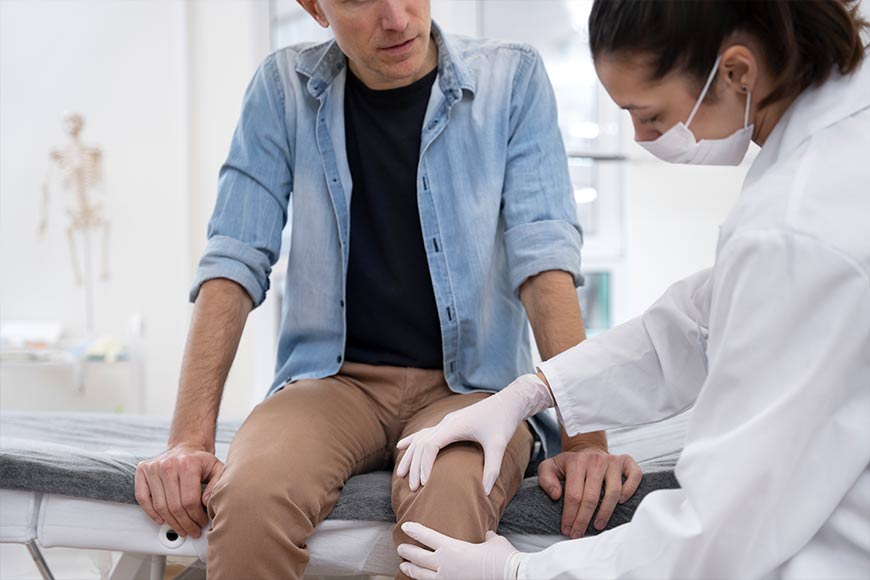
Fokus Fizical 100% guarantees fast and effective healing
Super DISCOUNT! 20% on all therapies in Oktober!
Do not treat yourself over the Internet! Make an appointment via Viber now
The knee is one of the most complex and heavily loaded joints in the body. It is made up of bones, ligaments, tendons, cartilage and mucous membranes that together provide flexibility and stability. When the balance between these structures is disrupted – whether due to injury, wear and tear or inflammation – pain occurs, often when bending the knee.
Pain when bending the knee can be a mild, occasional discomfort, or a severe, sharp pain that prevents normal movement. In the early stages, it may occur only with certain movements, while in advanced cases it can be present even at rest. Therefore, it is important to pay attention to the symptoms in time and not ignore them
Symptoms of knee pain when bending vary depending on the cause, but there are certain patterns that most often occur and can help identify the problem.
The most common symptoms include:
It is important to monitor when the pain occurs - whether during the day, during certain activities, and how long it lasts after exertion, as this helps determine the cause.
There are a number of different conditions that can cause knee pain when bending, and many of them are related to overuse, injury, or degenerative changes.
The most common causes include:
Patellofemoral Pain Syndrome: Also known as “runner’s knee,” it occurs when the kneecap (patella) does not slide properly over the joint surface of the thigh bone. This causes friction, irritation, and pain, especially when sitting, squatting, or climbing stairs.
Meniscus Injury: The meniscus is a cartilage part of the knee that acts as a shock absorber. The injury can occur from a sudden twisting of the knee, leading to pain, swelling, and blockage of movement, especially when bending.
Tendinitis (inflammation of the tendon): Often occurs in athletes or people who perform repetitive kneeling or bending movements. The patellar ligament (the tendon under the kneecap) is most commonly inflamed, causing localized pain with movement.
Bursitis: Mucous sacs (bursae) help reduce friction between joint structures. Their inflammation causes pain and swelling, especially when the knee is bent or pressure is applied (e.g., when kneeling).
Osteoarthritis: A degenerative joint disease that leads to the wear and tear of cartilage, most commonly in older adults. The pain is chronic and worsens with stress and movement such as bending.
Ligament injuries: If the ligaments are damaged, either partially or completely, pain and instability when bending can occur, with a feeling that the knee is “popping” or giving way.
Treatment for knee pain when bending depends on its cause, severity, and duration. Most cases can be resolved without surgery, but it is crucial to approach the problem systematically.
First steps to take: Initially, it is important to reduce the load - avoid activities that cause or increase pain. Applying ice to the painful area several times a day reduces inflammation and swelling. Rest and elevation of the leg can further contribute to relieving symptoms. Anti-inflammatory drugs, such as ibuprofen, can help, but are not recommended for long-term use without medical supervision.
Physiotherapy as the key to recovery: Physiotherapy and targeted exercise are the most important part of recovery. The focus is on strengthening the quadriceps and hamstring muscles, as well as improving joint stability. Therapists also use methods such as ultrasound, electrotherapy, and manual therapy to relieve pain and restore mobility.
When additional intervention is needed: In cases where conservative treatment does not yield results, the doctor may recommend additional diagnostic procedures (e.g., MRI) and consider other treatments such as corticosteroid injections, hyaluronic acid, or arthroscopic surgery, if serious damage has occurred
Why does my knee hurt when I bend it?
Pain when bending the knee can be caused by problems with the cartilage, meniscus, tendons, or kneecap. The most common causes are patellofemoral syndrome, meniscus injury, tendon inflammation (tendinitis), or early stages of osteoarthritis.
Is it normal for my knee to "click" or pop when I bend it?
Occasional popping without pain is not a cause for concern, but if it is accompanied by pain, swelling, or a feeling of instability, it may indicate damage to the cartilage, meniscus, or instability of the patella.
How do I know if the pain is serious and if I should see a doctor?
If the pain lasts longer than a few days, intensifies when moving, is accompanied by swelling, redness or the inability to fully bend or straighten the knee, you should consult an orthopedist or physiatrist.
Can I continue exercising if I feel pain when bending my knee?
Light exercises that do not directly put stress on the knee (e.g., riding an exercise bike or swimming) may help, but if the pain increases during activity, you should stop exercising and seek professional advice.
How to treat knee pain when bending?
Treatment includes rest, ice, physiotherapy, and targeted exercises to strengthen the muscles around the knee. In more severe cases, medications, injections, or even surgery may be used, depending on the cause.
Cash
Through a current account
Electronic card (Visa, Master, Dina, etc.)
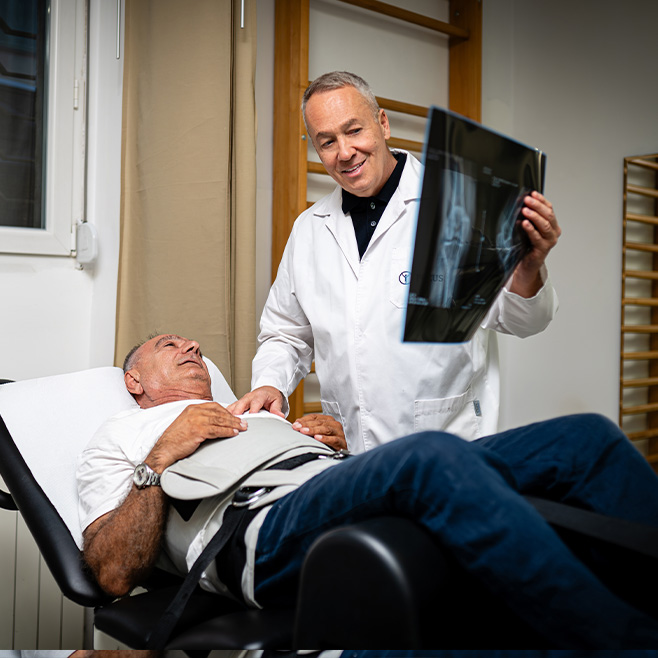
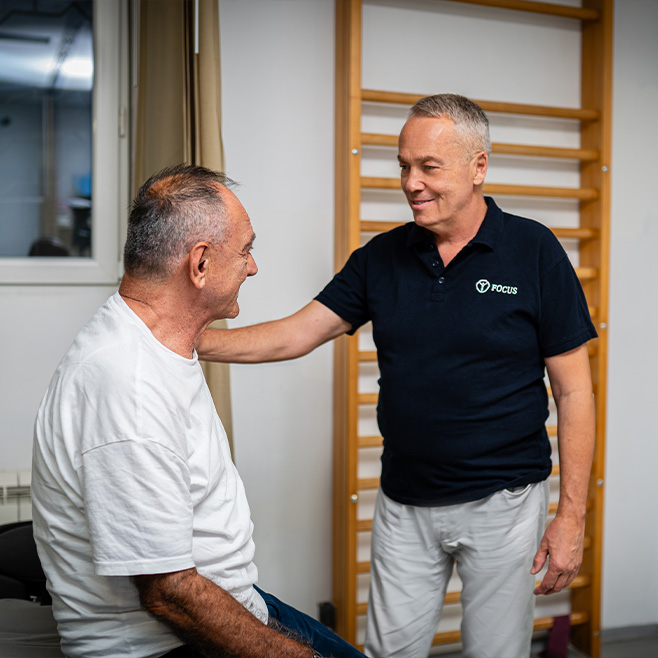
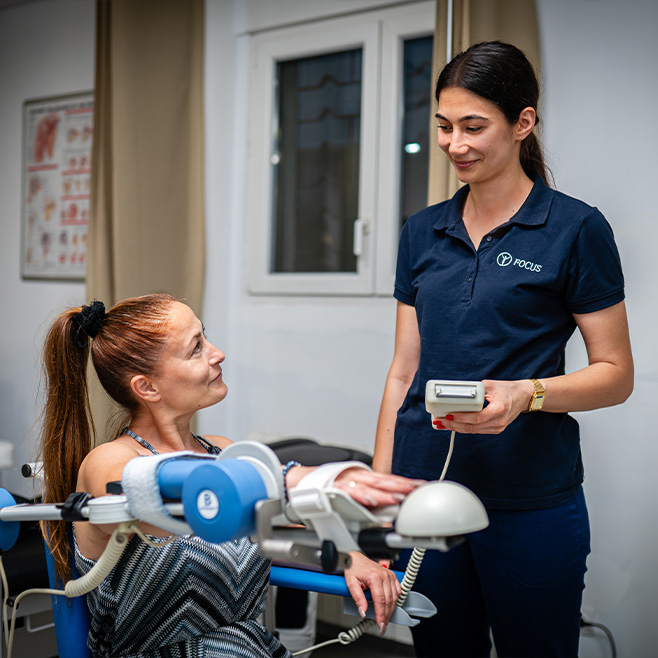
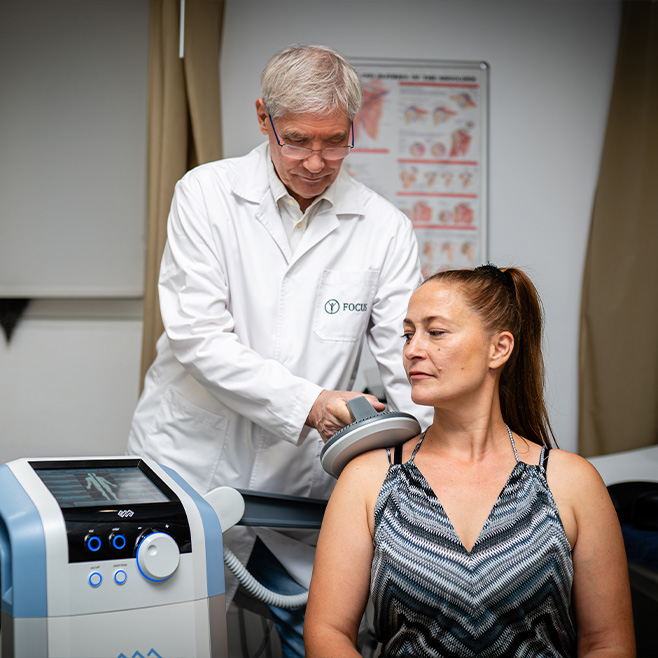
See the experiences of our satisfied patients who successfully recovered with the help of our physical therapy. Get acquainted with the testimonies of patients who faced various joint injuries, sports knee injuries, back injuries and similar problems, which we quickly, efficiently and successfully treated.
Aesthetic surgery
Focus Fizikal is a leading private clinic for physical therapy in Belgrade. For more than 10 years, we have been providing high-quality services that enable quick recovery and healing of our patients.

For all our current and future patients, we have made it possible to schedule an appointment online.